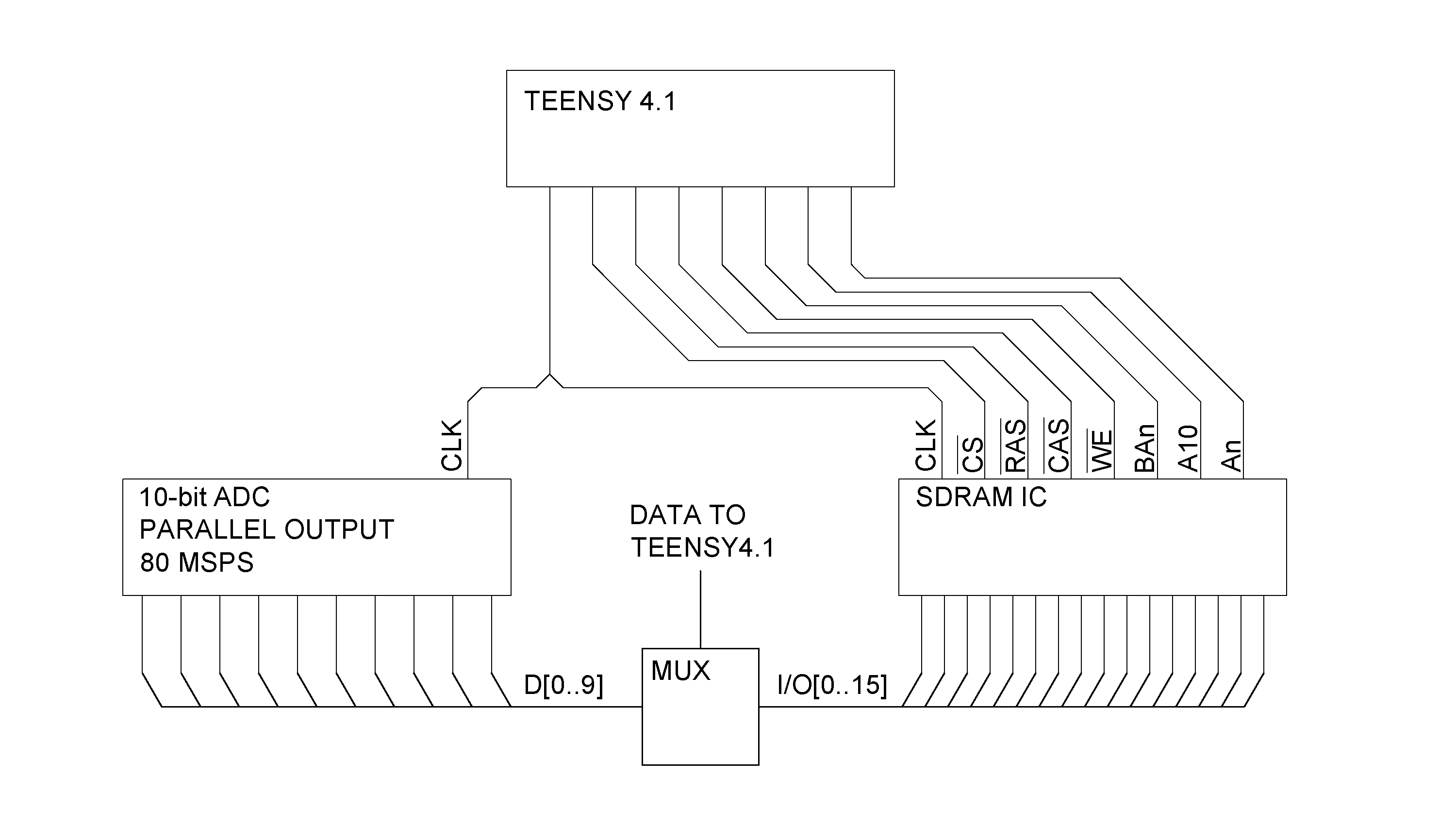I am working on a design for a high-speed data acquisition device for a 10-bit ADC signal at 80 Msps. So far, it looks like most MCU boards are too slow to be able to route and store data and keep up with the high sampling rate. The latest board that I've been looking at is the Teensy 4.1 with a CPU frequency of 600 MHz (can go higher with overclocking, up to ~1 GHz with cooling). What I am wondering is if I can circumvent this issue by interfacing the ADC output directly with the I/O pins on a memory IC or SDRAM chip. In this scenario, I would use the Teensy 4.1 to drive the clock signals and logic signals for both the ADC and SDRAM.
In order to read the data from the SDRAM, I would use a multiplexer to re-route the I/O pins on the SDRAM to the Teensy 4.1, which can process the data and write it to external memory via SDIO. The multiplexer would only be used to switch the signals after my measurement is complete.
I've included a schematic below for what I am trying to describe above. Is this something that can physically be done?

